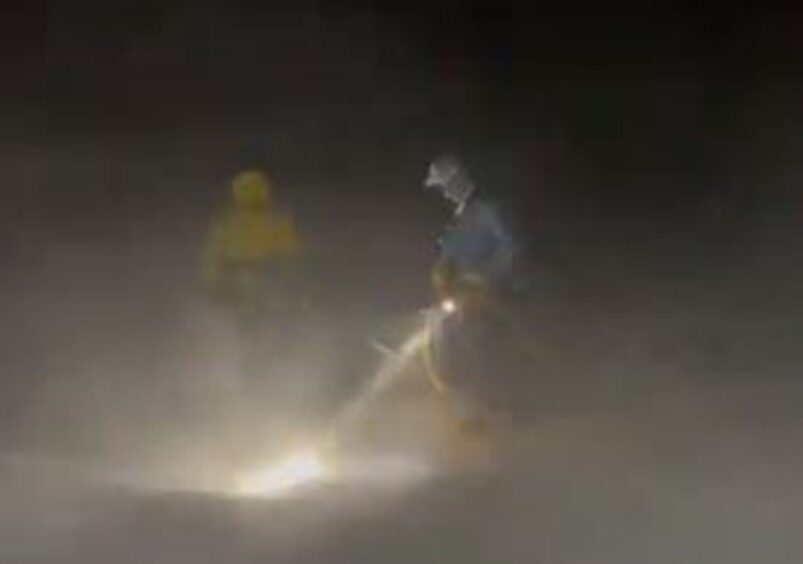A mountain rescue team have shared details of their seven-hour battle to rescue an injured man following an avalanche in the Cairngorms.
Cairngorm Mountain Rescue Team (CMRT) shared a nail-biting video showing the atrocious conditions they worked in to save the climber, who had fallen and injured his leg.
The rescue came hours after a warning was issued by the Scottish Avalanche Information Service, alerting climbers that the risk of such an incident taking place in the Cairngorms was “considerable” at the moment.
CMRT – with support from Cairngorm Mountain – hauled the injured man to safety in the darkness of the hillside at the Central Gully in Coire an t-Sneachda.
Cairngorm Mountain Rescue Team battle after avalanche
The injured climber’s walking partner was uninjured and was able to make their way down the mountain.
A video shared by CMRT shows driving snow and wind as they work to bring the casualty down from the hillside.
In a post on Twitter, a spokesperson said: “CMRT were called out yesterday at 4.30pm to a casualty who had been caught by an avalanche whilst climbing Central Gully in Coire an t-Sneachda.
“The climber had sustained a lower leg injury during the fall and his climbing partner remained on belay, unharmed.”
The spokesman continued: “With conditions deteriorating we were able to lower down one of our team to the climbers, then attach them to our rigging set up and haul them up to safety.
“After some rewarming the casualty with the lower leg injury was then packaged into a stretcher and carried out to the ski area, whilst the other climber was able to walk out.
“Everyone safe and back at base 11.30pm.
“Many thanks to Cairngorm Mountain for their assistance during this rescue.”
Avalanche hazard will be ‘considerable’
The Scottish Avalanche Information Service issued an avalanche report for the Northern Cairngorms on Wednesday.
It said: “Freezing level rising to near summit levels – a very serious day in prospect with storm force winds and heavy precipitation.
“Significant drifting will continue to rapidly build poorly bonded windslab onto Westerly through North to Easterly aspects above 700 metres where avalanches are likely.
“Coire rims, gullies and crag aprons will be most affected. Below this level weak windslab will build in wind sheltered places.
“Cornices will build and be prone to sudden collapse.
“The avalanche hazard will be considerable.”
